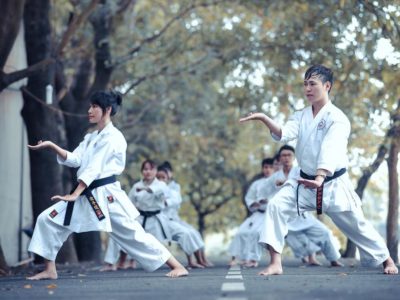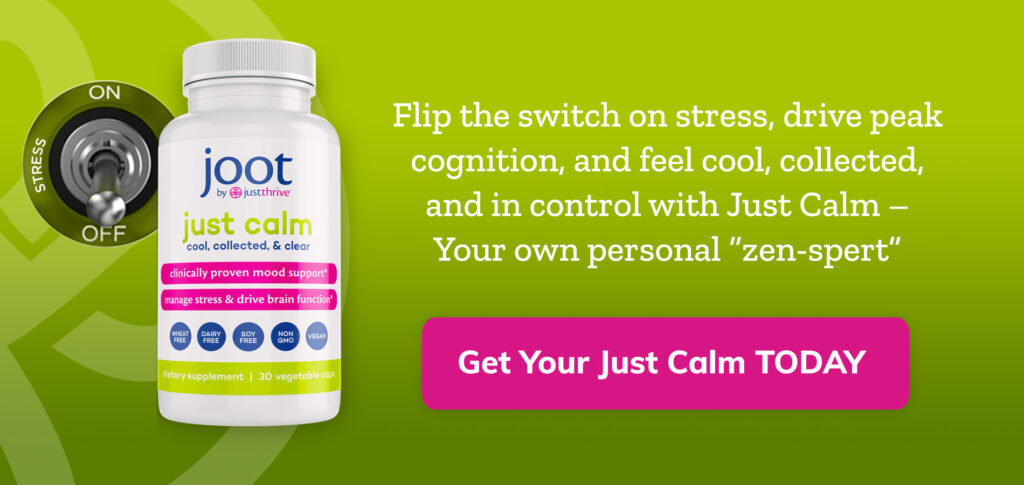Table of Contents[Hide][Show]
- Personal Note From a Mindfulness Practitioner
5 Important Tips For Success With Mindfulness+−
- 1. There is no time limit.
- 2. Anyone, with any belief system, can practice mindfulness.
- 3. There isn’t a “best” time of day to practice mindfulness.
- 4. Stretching before you meditate can make it more comfortable.
- 5. It does get easier with daily practice!
- 5 Mindfulness Exercises for Kids and Parents to Enjoy Together
- 3 Easy Steps to Stop Stress From Ravaging Your Body and Brain
- The Deep Breathing Detox: Could Better Breathing Lead to Better Health?
Relax and say “ommmm…”
No, wait, scratch that…
Many non-meditators might imagine that’s what you’re supposed to do when you meditate: Sit crossed legged, close your eyes, chant mantras with your thumb and index finger touching… But that doesn’t quite capture the spirit of the meditative practice known as “mindfulness.”
We live in a world that asks us to constantly multi-task. Keep an eye on dinner while you fold laundry. Listen to a podcast while you commute. Answer emails while you homeschool your kids. And as our to-do lists get endlessly longer, so does our collective stress level. We do so many things on autopilot without even stopping to think why we are doing them or if they are actually important, and eventually all of this can lead to a decline in our overall wellness and even burnout.
While any meditation practice can help you create balance, mindfulness, also known as mindful meditation, is a way of directly combating the stress and noise of daily life. It does this by empowering us to focus on the present in an accepting, non-judgmental manner.
Personal Note From a Mindfulness Practitioner
I had my own eye-opening experience with mindful meditation in March of 2020. At the time, I was running the fitness center at a luxury resort… But as gyms across the city began to shut down, all our fitness classes were forced into temporary hiatus.
And like many other fitness instructors, I struggled to find a way to keep my students physically and emotionally fit through what would become many months of trying times. I eventually decided that the best (and only) solution was to take my cardio and strength training classes online.
Up until the pandemic, I had made a practice of starting all my classes early with some yogic stretching to center and ground my students. Initially, due to time constraints, I had to remove that from my online classes… But I quickly found that my students sorely missed that mind-body connection.
After a frank discussion about the centered calmness we all drew from beginning the day with breath work and flow, I expanded my schedule to teach Morning Stretch and Meditation. And I’m so glad I did…
Without question, mindful meditation helped keep my students and I mentally tough as we coped with virtual schooling, job losses, and canceled events month after month.
Having witnessed the many benefits my students (and I) experienced, I’m now a firm believer in the power of a regular mindful meditation practice. And I’m delighted to guide you through mindfulness, detail the physical and emotional benefits, and show you how to practice mindfulness meditation on your own.
What Is Mindfulness?
Mindfulness means being intensely aware of the present moment, of what you are sensing and feeling. You suspend all judgment, and calmly accept whatever comes up for you. There are no right or wrong thoughts, feelings, or emotions when you practice mindfulness. You don’t need to react or analyze.
Simply observe, take note, accept it, and let it slide away.
The Three Keys to Mindfulness
While there are many different methods for developing mindfulness, there are three key characteristics that mindfulness techniques have in common:
- Intention: You are seeking awareness. If your mind wanders, and it likely will, you will return to your intention.
- Attention: You are giving your full attention to the present and your thoughts, feelings, and sensations.
- Attitude: You are open and accepting, not judging.
With those foundational keys in place, you can begin your mindfulness practice.
Ways to Practice Mindfulness
You can incorporate mindfulness throughout the day, in both big and little ways. There are no hard and fast rules, like practicing for a specific amount of time.
Rather, try to fit it into your day as best as you can. Once you start to feel its benefits, you’ll likely find yourself making more time to practice.
Mindful Meditation
This is perhaps the most common way to practice mindfulness, since most people are at least somewhat familiar with the idea of meditation. The practice offers a simple, easy-to-follow structure, which novice practitioners can find helpful.
How to Practice Mindfulness Meditation
- Find a quiet place in the house, preferably a room with a door you can close. If you can’t find a quiet spot, use a white-noise machine (or mindfulness app) to block out other sounds.
- Make sure you are wearing comfy clothing. Itchy tags or tight jeans will distract you.
- Sit in a comfortable position. It doesn’t have to be the lotus (cross-legged) position. It doesn’t even have to be on the floor. Use a chair, cushion, or anything else you need.
- Rest your hands lightly on your legs, palms up or down, whichever you prefer.
- Begin by focusing your breathing as you allow your mind to settle. Notice your inhales and exhales; feel the air filling your lungs from top to bottom.
- Use your senses to become aware of your surroundings. What do you smell, see, or hear?
- Then ask yourself how you are feeling, physically and emotionally. Don’t judge or attempt to label your responses. Simply observe and release your thoughts as they flow.
- If you find your mind wandering—and it will—gently redirect your thoughts back to the present moment.
- Finally, when you’re ready to end your meditation, focus on your breathing again as you slowly open your eyes and bring the practice to a conclusion.
Other Ways to Practice Mindfulness
If you don’t feel comfortable with a classic seated meditation, there are a number of other ways to practice mindfulness.
Walking Mindfulness
This is best done outdoors, in nature. As you walk, tune in to your surroundings. Do you hear birds or a bubbling brook? Can you smell flowers? Pay attention to even the smallest details. When you are ready, turn your thoughts inward and tune in to how your body is feeling.
Active Mindfulness
You can combine mindfulness with other activities. A slow and repetitive activity is best, as it won’t distract you the way chasing a tennis ball would. Swimming, yoga, tai chi, and similar sports can all be good options.
Related
15 Types of Martial Arts and Their Health Benefits
What are the different types of martial arts and how will they benefit you? This article will tell you why you should consider learning martial arts! 15 Types of Martial Arts That Strengthen Your Body and Boost Your Brainpower For many folks, martial arts is an integral part of life. Students young and old choose …
Mindfulness Breaks
You can practice mindfulness whenever you have a free quiet moment: sitting in a car, waiting in line, even cleaning the house. Simply slow your breathing and let yourself become aware of your surroundings, feelings, and thoughts. Sprinkling these mini mindfulness breaks throughout your day can keep you centered and calm.
Benefits of Mindfulness
According to the University of California, Berkeley, thousands of studies have been conducted linking mindfulness to physical and mental health benefits.
Reduced Symptoms of Depression, Anxiety, and Stress
Practiced regularly, mindfulness will have an overwhelmingly positive impact. Studies show a clear link between practicing mindfulness and positive changes to cognitive function. This includes the reduction of negative emotions such as stress, depression, and anxiety. This is because learning regular mindfulness skills through meditation can combat the intrusion of negative thoughts.
Jon Kabat-Zinn’s stress reduction program of Mindfulness-Based Stress Reduction (MBSR) is one well known and helpful method in lowering stress and anxiety. Created in 1990, this program uses a series of mindfulness-based techniques that can be applied easily by anyone, anytime. These techniques include:
- Focused breathing
- Mindful eating
- Walking meditation
- Mindful listening to the senses and to physical sensations
- Body scan meditation
Increased Concentration
A study of novices shows an increased power of concentration in just 10 days of practicing mindful meditation, especially mindfulness exercises with deep breathing. Participants found it easier to sustain their attention to the task at hand.
Improved Immune System
When your body encounters illness or infection, it sends out immune cells to help you fight them off and recover more quickly. Studies have shown that practitioners of mindfulness have a higher number of these immune cells. These include T-cells (white blood cells that kill infected host cells) and interleukins -8 and -10 (which stimulate immune responses).
Related
5 Practical Tips to Build a Healthy Immune System for Kids
Learn how the immune system works and how to build a healthy immune system for kids with the info and tips in this post.
Coping With Chronic Conditions
Chronic conditions often come with psychological issues, especially depression and anxiety. Studies have shown that mindfulness can have significant positive effects on these conditions. Mindfulness-based stress reduction can also help with physical chronic pain.
More Thoughtful Choices
The more you practice mindfulness, the easier it will be to “tune in” to what your body is feeling. This enables you to make more well-thought out choices. The classic example is eating junk food when you are bored. Once you realize what your body truly needs, you can look for healthier ways to occupy your time.
5 Important Tips For Success With Mindfulness
1. There is no time limit.
Although 20 minutes, twice a day, is often recommended, sometimes that’s simply not possible. It is always better to practice for less time, than to skip a day altogether.
Also, when you’re first starting out, you might not be able to sit comfortably with your thoughts for that long. Set a timer on your phone for a 5–10 minute meditation and ease your way up. Soon enough, a meditation session or two will become a part of your everyday life.
2. Anyone, with any belief system, can practice mindfulness.
Mindfulness is a secular practice, with no religious beliefs attached to it. When meditation became more mainstream in the early 1970s, it retained its more Buddhist influences such as chanting holy words and seeking enlightenment. However, nowadays very few mindfulness practices contain any religious guidance. Instead, they focus on universal themes such as acceptance, oneness, and kindness.
3. There isn’t a “best” time of day to practice mindfulness.
If you have trouble finding time in your daily routine for your mindful meditation, though, it might be best to schedule it early in the day (soon after you wake up) or late at night (while the rest of the house sleeps).
For my meditation classes, I prefer a morning meditation. This helps set a peaceful, focused tone for the rest of the day. Meditating at night can also calm an overactive mind and encourage better sleep.
4. Stretching before you meditate can make it more comfortable.
Sitting for a long time in one position, no matter how comfortable, is never easy. Stretching your hips and glutes can be especially helpful. The distraction of sore muscles will make it more difficult to focus on your thoughts.
5. It does get easier with daily practice!
As with most activities, the longer you spend practicing mindfulness, the easier it will get. At first, you will be distracted by the kinds of thoughts that constantly interrupt your mind: what to make for dinner, does the dog need to be let out, replying to a text, and so forth. This is completely normal and there’s no need to get frustrated. Let these thoughts ebb and flow naturally. Eventually, you will train your mind to focus more on the present.
Final Thoughts
Although I had been practicing, and leading mindfulness for years, I was not consistent with my mindful meditation until I had the accountability of teaching it online, 5 days per week.
At first I thought I would never be able to lead a one-hour class; what would we do for an entire hour? I was nervous that first day, but I crossed my fingers, took a deep breath, and hoped for the best. I let my emotions and intuition guide me, even as I guided students. And 5 days a week, week after week at 7:30 a.m., we did it.
Despite the stress of a pandemic, worrying about my family, virtual schooling two teenagers, and so much more, I can say with absolute certainty that mindful meditation kept my sanity intact. I felt sharp and focused, yet relaxed and calm.
And although I have been in the fitness industry for years, mindfulness allowed me to become more in tune with my body. I knew exactly what hurt and why. This last part surprised me. As a fitness instructor, I’ve always been able to analyze my aches: “oh, my shoulder hurts from lateral raises.” But to suddenly notice little discomforts and attribute them to things like my emotions was a completely new experience.
As for my students… I still get messages from them thanking me for teaching them how to practice mindfulness. So I know it’s worked for them, too. And I have absolute faith that with small, consistent practice, your physical and mental well-being will also benefit from mindful meditation.
You May Also Like…






